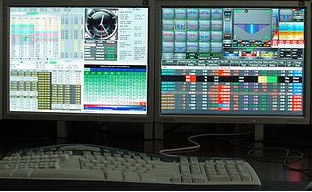
Over the past decade or so, the growth of OMS and EMS platforms has paralleled the growth of electronic trading – but it would be a stretch to suggest a direct cause-and-effect relationship. These days, though, given the growing importance of electronic trading and the increasing focus on it by regulators, the evolution of OMS/EMS platforms may be having a more causal impact on changes in both e-trading itself and the dynamics between the buy-side and the sell-side. And even as so-called combined OEMS platforms begin to mature – currently still more theoretical than actual, though that’s starting to change – e-trading players appear to be looking for even more comprehensive integration, perhaps pointing toward deeper shifts in traditional market dynamics.
Certainly the goals and motivations that drive sell-side traders will always be different from those driving their buy-side counterparts and clients. But the mechanics of both, and the systems they use, are becoming more and more similar. In our recent Greenwich Report “Trading Technology: OMS/EMS Trends, Rankings & Opportunities” we noted one of the reasons for this: as more sell-side traders move to the buy-side, they “bring with them a desire for trading tools previously only used by broker-dealers.” And as buy-side organizations take on greater execution risk, such shifts appear to be “causing a major rethink of trading technology used on the desk.”
The perceived importance of technology has always had a distinct ebb and flow in the evolution of the markets -- but when it flows, it flows quickly. Fully 77% of the 316 equity trader respondents we surveyed for our 2014 U.S. Equity Electronic Trading study cited “ease of system use, reliability and quality of technical support” as an important consideration in selecting brokers for algo / smart-order trading – outstripping the next most-cited criterion by a whopping 33%. This suggests that buy-side traders are increasingly focused on the need for intuitive technology to help them pull greater and greater value out of the electronic marketplace as it continues to mature.
The current agenda appears to call for reliable technology that combines OMS, EMS, and compliance-sensitive functionality with fluid access to algo’s and other e-trading tools, as well as a wider range of liquidity pools – all delivered to the buy-side user with simplicity and reliability. Yes, we know this sounds like the Holy Grail – something everyone wants but no-one can deliver – but our research suggests the possible onset of a tipping point. Market history leaves little doubt that when there’s sufficient demand, technological "miracles" can quickly become desktop standards -- sometimes far more quickly than anyone anticipates. Watch this space.

